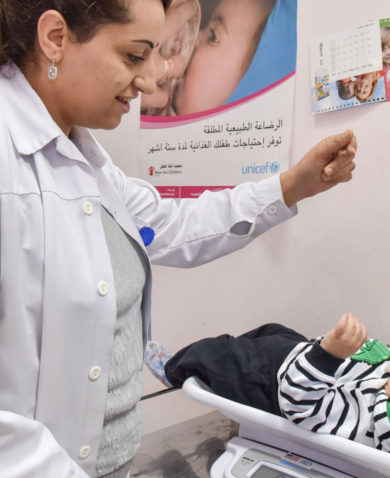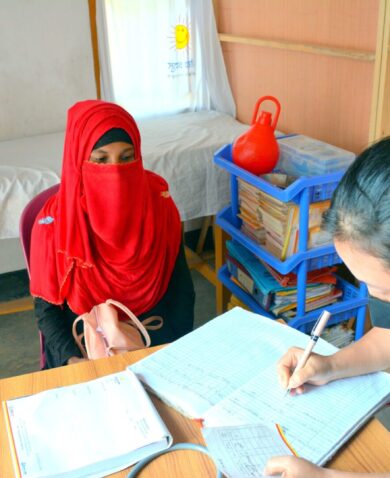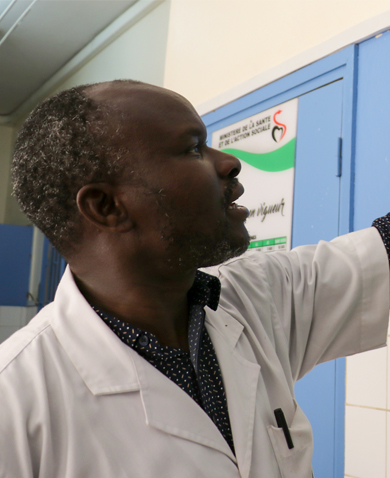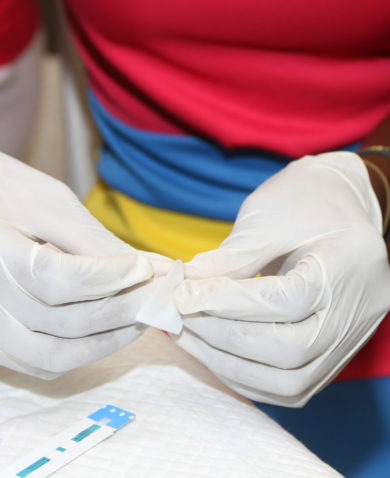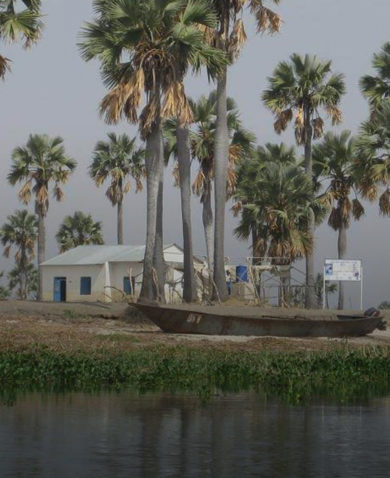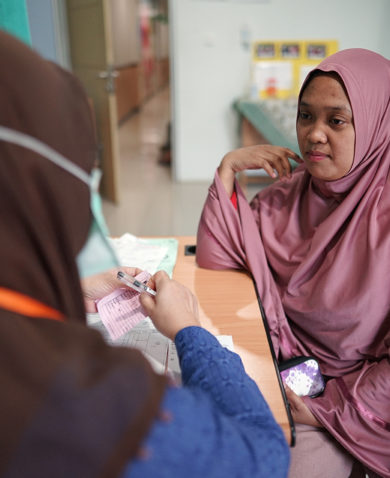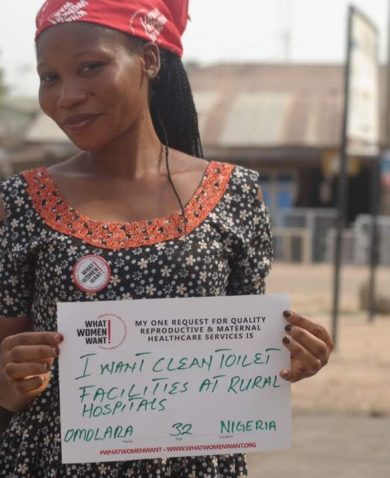
Critical Role of Female Community Health Workers Warrants Recognition
August 15, 2019 | 4 Minute ReadFemale community health workers are essential to reaching underserved segments of the population, especially in weaker health systems, yet they do not always receive the professional recognition and support they deserve.
When the government of Bangladesh, a country with high rates of maternal mortality, invested in midwifery training programs in 2015, many of the newly minted midwives from the first cohort headed to Cox’s Bazar to provide services to thousands of Rohingya refugees fleeing deadly violence in Myanmar. Though female community health workers (FCHWs) operate in similar settings to deliver critical services to the world’s most underserved groups, their valuable contributions — and needs — are often ignored.
In weak health systems — due to a lack of resources, sociopolitical factors, humanitarian crisis, or conflict — operational linkages between community structures, service providers, and the population are fragile, and underserved communities are made especially vulnerable through legal and logistical barriers that arise in accessing critical health services. The health workforce in these difficult contexts mirrors the gendered hierarchy seen in stronger and more stable settings where women comprise the bulk of the health workforce, but they are clustered in the lowest cadres and are frequently relied upon to provide a wide array of health services. In unstable settings such as refugee camps, where half of births still occur outside of formal health clinics, community health workers, particularly FCHWs, are often the first — and sometimes only — care providers for refugees. Studies show that these home visits result in significant reductions in maternal and neonatal morbidity, even in challenging, low-resource environments.
Barriers to Inclusion and Acceptance
While some countries, such as Nepal, have acknowledged the contributions of FCHWs to improving the health of their populations, especially in maternal, newborn, and child health, such recognition is not common, and there remains little support or understanding of the gendered issues that impact FCHWs’ ability to fully participate and thrive in the health workforce. Furthermore, even in countries that do acknowledge the tremendous value that FCHWs bring, there remain policy and implementation challenges surrounding these programs.
Chief among the challenges facing FCHWs are the lack of adequate financial compensation and absence of defined career paths. Although they comprise a large part of the health workforce, FCHWs are often unpaid and their work is perceived as secondary to their responsibilities in the domestic sphere. Prevailing gender and cultural norms often reinforce a paradigm that devalues FCHW contributions, particularly in low-resource settings. The few paid CHW positions are often offered to men because decision-makers assume that women should volunteer their efforts.
Providing Incentives that Work
A robust health system should include financial incentives that are commensurate with the number of demands and complexity of the duties that FCHWs take on. The World Health Organization states this explicitly in its recently released guidelines to optimize CHW programs. When governments invest in FCHWs, there are clear benefits to the health system overall and to underserved communities. In Somaliland, for example, government health ministries have worked in close coordination to increase the number of trained FCHWs to provide a range of critical public health services in rural areas. As a result of vaccination programs implemented by CHWs, no major outbreaks of measles were reported in more than two years.
However, domestic financing to pay CHWs can be an extremely tough sell, particularly in fragile settings. As UNICEF notes bluntly, “since CHWs are often viewed as non-essential health workers, simply requesting that countries reallocate limited public funds to pay for them is unlikely to succeed.” This attitude is further validated by the fact that in some countries, CHWs that actually receive stipends are funded by donors, not by the government in the countries where they work. In this analysis for Uganda, the costs of CHWs varied widely due to uncertainty in annual cases seen by and workload requirements for the range of CHW cadres supporting HIV.
Other solutions to the lack of available financing, such as offering a diverse range of non-financial incentives in lieu of a salary, have shown moderate success at motivating and retaining community health workers. One study of CHW programs in conflict-affected countries throughout East and Southern Africa found that these non-financial incentives were more effective at preventing CHW attrition when part of an integrated approach that included a steady career ladder for CHWs, including future opportunities for paid work. Though its study focused on paid health workers, the USAID HRH2030 program found that among doctors, nurses, and midwives in Jordan’s Ministry of Health facilities, “providing frequent and equitable opportunities for continuing professional development for staff to regularly update their knowledge and skills” and “introducing systematic and productive channels for patient feedback and appreciation” were effective tactics to motivate and retain Jordan’s health workforce.
Driving Integration into Health Systems
Without local ownership and integration into the health system, FCHWs are at the mercy of the ever-shifting winds of donor funding priorities. One way to drive this integration is to increase female participation in health worker initiatives in the communities in which they reside. FCHWs are embedded in the communities they serve, understand the local context, and are well-positioned to respond appropriately.
There is also strong evidence that community acceptance is an important contributor to FCHWs’ well-being, particularly in fragile settings where there is minimal or no government support. In one study of health worker incentives in conflict-affected countries, CHWs reported that even when resources were scarce, communities often demonstrated their support by providing food, transportation, and security. These types of local support mechanisms and mutual reliance between the community and FCHWs are essential to build long-term capacity, especially in fragile settings.
In weak health systems, no single actor can adequately meet the full spectrum of health needs in a community. FCHWs form the foundation of any strong health system and elevating their role should be a shared goal to strengthen the capacity of all health partners. To ensure they remain in their positions and can perform their best, governments, donors, and other actors within the health system must accept and legitimize the critical role of FCHWs, provide incentives that work (e.g., financial compensation, opportunities for professional advancement), and integrate the role of all CHWs into broader health systems design and implementation. By doing so, we can move away from relegating women to the bottom of the health workforce hierarchy and designing CHW programs that sideline or ignore their concerns. Female community health workers sacrifice to serve their communities in some of the world’s most difficult contexts. It is time for other global health actors, governments, and the international community to do their part.
Posts on the blog represent the views of the authors and do not necessarily represent the views of Chemonics.



